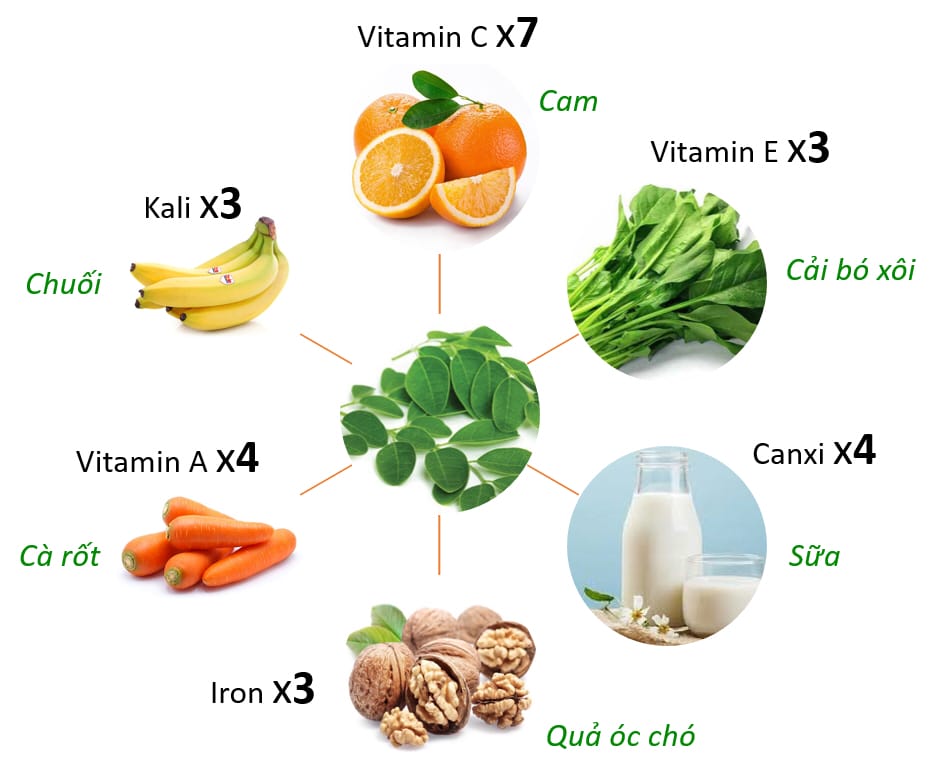The Moringa Oleifera tree, also known as the Drumstick tree, is a small deciduous tree that has various names in English such as “Horseradish tree” and “Bel-oil tree.” The tree is native to tropical and subtropical regions and is primarily found in countries with warm climates.
The Moringa Oleifera tree is a small, woody tree that can reach a height of 5-6 meters and a diameter of 10 cm when fully matured. The bark of the tree is thick and grayish-white, with visible grooves. When injured, the bark excretes a gum-like substance that changes color from white to reddish-brown or black. The tree has no thorns.
The leaves of the Moringa Oleifera tree are compound leaves that grow alternately and can reach a length of 30-60 cm. The leaves are green in color. The tree produces white flowers that resemble pea flowers and bloom from April to June. The tree also bears brown triangular fruits that hang in clusters. Each fruit is long and thin, measuring 30-50 cm in length and 1.5-2.5 cm in width. The fruit contains at least 20 seeds that are dark brown in color and have a triangular shape with white wings.
The Moringa Oleifera tree is primarily distributed in tropical and subtropical countries. In Vietnam, the tree is commonly found in provinces such as Da Nang, Quang Nam, Nha Trang, Phan Thiet, and Kien Giang (Phu Quoc).
Various parts of the Moringa Oleifera tree are used for different purposes. The fruits, roots, young leaves, flowers, and young branches of the tree can all be harvested. The fruits are typically harvested from July to September, while the leaves can be harvested throughout the year. The flowers bloom from April to June.
Each part of the Moringa Oleifera tree contains different chemical compounds. For example, the bark contains gum-like substances, -sitosterol, and benzylanin. The roots contain glucosinolates, while the leaves contain antioxidants such as flavonoids and phenolics. The flowers contain polysaccharides, and the seeds contain glucosinolates and peptides. The whole tree contains pterygospermin.
The Moringa Oleifera tree is known for its nutritional value. In fact, 1kg of the tree can provide enough nutrition for a family of four for a day. The leaves of the tree are especially nutritious, containing high amounts of vitamin C, vitamin A, and calcium.
The Moringa Oleifera tree has many health benefits. Its leaves are known to have anti-cancer properties and can inhibit the growth of cancer cells. The tree’s leaves and other parts can improve metabolism, boost the immune system, and reduce the risk of cardiovascular diseases. The tree also protects the liver, regulates blood sugar levels, and helps prevent anemia. Additionally, the tree has beauty benefits, promoting healthy skin and hair.
The Moringa Oleifera tree can be consumed in various ways. The leaves can be eaten raw or used in smoothies. They can also be dried and ground into powder for making drinks or cooking. The flowers can be dried and used for making tea. The fruits can be cooked in soups or stir-fried with meat.
It is important to note that the Moringa Oleifera tree should not be consumed continuously for a long period of time. It is recommended to consume it no more than three times a week, with each serving not exceeding 20-30g. Pregnant women should avoid consuming the tree as it may cause uterine contractions and the risk of miscarriage. It is also advised not to consume the tree in the evening as it may interfere with sleep. Finally, when cooking the tree, it is best to cook it lightly to preserve its nutritional content.

The Moringa Oleifera tree is a versatile tree with numerous health benefits and culinary uses. Its nutritional value and medicinal properties make it a valuable addition to any diet.

The Moringa Oleifera tree has a compound called silymarin, which protects the liver and improves its functions.

Pregnant women should avoid consuming the Moringa Oleifera tree as it may lead to miscarriage.



































